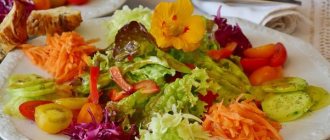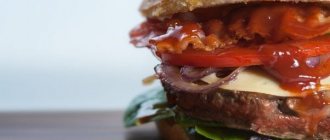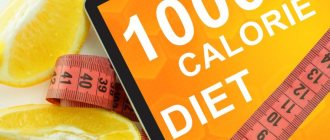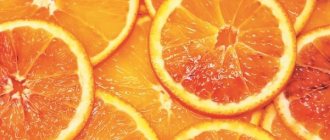For people who are not accustomed to restricting themselves in food, any diet is already a punishment, and a hypocaloric food system is a real torture. But here we must immediately make a reservation that this type of diet is not an option for young ladies who want to lose 2-3 kilos gained over the holidays. This nutritional system has medical roots. As a rule, it is prescribed to people with varying degrees of obesity and serious metabolic disorders. But in our time, this dietary program has gone beyond medical use. Those who want to achieve ideal body proportions as quickly as possible are not afraid of the “hungry” diet of table number 8 (this is what doctors call this nutrition system). Is it possible for people who are slightly overweight to go on this diet, and how does hypocaloric nutrition differ from other low-calorie systems?
Peculiarities
The main feature of a hypocaloric (low-fat) diet is that it requires reducing the number of calories consumed per day by almost 50%. The diet involves eating low in carbohydrates and fats. As a rule, it is prescribed by a doctor to prevent cardiovascular diseases associated with high amounts of cholesterol in the blood.
Option for losing weight on a low-carb diet
Pros and cons of a low-fat diet
Although a low-fat diet helps with certain diseases and promotes rapid weight loss, you should consult a qualified doctor before starting it, otherwise it may cause irreparable harm to your health.
Advantages:
- rapid weight loss;
- improvement of metabolism and normalization of the gastrointestinal tract;
- purgation;
- removal of excess fluid and toxins from the body;
- strengthening muscle tissue.
Flaws:
- cessation of menstruation in women due to fat deficiency;
- decreased libido;
- the appearance of cellulite and sagging;
- increased feeling of hunger;
- stress, irritability, emotional depression as a consequence of fat deficiency;
- deficiency of vitamins in the body. For example, vitamins A and D are mainly found in animal fat, and red meat is prohibited on this diet;
- fatigue and weakness, accompanied by constant physical hunger;
- hormonal imbalance.

Contraindications
A low-calorie diet is strictly contraindicated for nursing mothers, pregnant women, children under sixteen years of age, pensioners, as well as people with hormonal imbalances, depression and eating disorders.
The danger of a hypocaloric diet is that a long-term absence of healthy fats and carbohydrates negatively affects the body.
A lack of fat-soluble vitamins, such as A, D, E, K, leads to a serious deficiency of unsaturated fatty acids, which are very important for the normal functioning of the body.
Great news!

There is a safer way to deal with accumulated fat without losing your good mood, without giving up delicious food and without risking getting sick.
For everyone who is interested in my blog, I offer my “Active Weight Loss Course” . I will tell you how to act to improve your condition and not risk making yourself worse. Since I myself went through all this (and you can see this by visiting other sections of my site), I will not only tell you, but also help, respond to your feedback and answer questions. And I will do it with pleasure.
That's all for today. Thank you for reading my post to the end. Share this article with your friends. Subscribe to my blog. And let's move on!
Products
When going on a hypocaloric diet, you need to understand that the consumption of many foods will have to be reduced, and foods high in carbohydrates, fat and harmful additives will need to be excluded for the duration of the diet.
List of prohibited products:
- various trans fats contained in fast food;
- butter, full-fat sour cream, cheese of any kind;
- soda, packaged juice;
- cow's milk;
- red meat;
- salo;
- sausages, frankfurters, small sausages;
- fast carbohydrates: chocolate, cakes, puff pastries, various types of cookies with cream;
- pickled spicy foods;
- various semi-finished products;
- mayonnaise, ketchup, hot sauces;
- alcoholic drinks;
- high fat cream;
- White bread.
List of permitted products:
- low-fat dairy products, except cheese;
- lean poultry and fish: chicken fillet, steamed sea bass;
- slow carbohydrates: buckwheat, rice, millet, durum wheat pasta;
- non-starchy vegetables: cucumbers, herbs, tomatoes, bell peppers;
- whole grain bread;
- herbal teas;
- natural coffee, chicory;
- seafood;
- mushrooms;
- potatoes baked without oil;
- fruits in small quantities.
Rules to follow
There are a number of rules that must be followed on a hypocaloric diet in order for it to be as successful as possible. The main ones are listed below.
- Complete rejection of fast carbohydrates, junk and fatty foods.
- Reducing calories consumed per day by about one and a half to two times.
- Exclusion of certain foods during the diet.
- Consume plenty of lean protein to avoid lean muscle mass.
- Consultation with a doctor on a menu compiled according to the rules of a hypocaloric diet.
- Taking a vitamin complex to maintain balance in the body.
- Drink plenty of clean and mineral water, reduce salt intake.
Menu
Below is a sample menu for 7 days, compiled according to the rules of a hypocaloric diet.
Day 1
- Breakfast: oatmeal on water with apple and honey, orange;
- Snack: a glass of low-fat yogurt + whole grain bread;
- Lunch: a piece of skinless chicken breast + a portion of durum wheat pasta + fresh cucumber;
- Snack: 2 cheesecakes with jam;
- Dinner: vegetable salad of cucumbers and tomatoes, buckwheat porridge with water.
Day 2
- Breakfast: rice porridge with skim milk, honey and apple;
- Snack: two egg whites + fresh vegetables;
- Lunch: vegetable soup with chicken + potatoes baked in the oven;
- Snack: a glass of freshly squeezed juice;
- Dinner: seafood stewed with vegetables and spaghetti.
Day 3
- Breakfast: buckwheat porridge with berries and honey + herbal tea;
- Snack: vegetable salad + a piece of black bread;
- Lunch: rice with vegetables + steamed fish without oil;
- Snack: low-fat cottage cheese 100 grams;
- Dinner: sautéed eggplant + chicken fillet.
Day 4
- Breakfast: 4-white omelet with skim milk, onions and tomatoes;
- Snack: natural yogurt with jam + orange;
- Lunch: chicken soup with noodles + cucumber and tomato salad;
- Snack: pineapple;
- Dinner: chicken baked with potatoes in the oven without oil or sauces.
Day 5
- Breakfast: millet porridge with milk, honey and dried fruits;
- Snack: vegetable salad + whole grain bread;
- Lunch: mushrooms fried with onions + boiled potatoes;
- Snack: a glass of low-fat fermented baked milk;
- Dinner: tuna in its own juice + durum wheat pasta.
Day 6
- Breakfast: mashed potatoes with skim milk + vegetables;
- Snack: watermelon/melon/berries;
- Lunch: onion soup + black bread croutons with garlic;
- Snack: low-fat thermostatic yogurt + a plate of berries;
- Dinner: pilaf with vegetables and chicken breast.
Day 7
- Breakfast: buckwheat porridge stewed with onions and carrots + vegetable salad;
- Snack: several pieces of dried apricots/prunes;
- Lunch: boiled pasta + 4 egg whites;
- Snack: natural coffee with whole grain bread;
- Dinner: oatmeal with water and honey + a glass of kefir.
Recipes
Recipes for low-calorie diet dishes are perfect for those who monitor the condition of the thyroid gland and are familiar with a disease such as diabetes.
Just like the hypocholesterol diet, the hypocaloric diet excludes frying in any form, but also prohibits fats.
Therefore, all recipes for a hypocaloric diet involve boiling, stewing and baking.
- Low-calorie baked fish:
We marinate low-fat fish in lemon juice with the addition of sea salt, stuff it with thyme and/or tarragon, lemon slices, wrap it in foil and bake in the oven for 15-20 minutes. - Meat rolls with prunes:
Chicken breast, cut lengthwise into two thin pieces, additionally beat, pour lemon juice or soy sauce, lay out prunes or dried apricots, roll up.You can pin it with a toothpick or wrap it with thread. After this, bake in foil in the oven for 50 minutes.
- Steamed meatballs:
Minced lean meat or fish, season with spices, add one egg and a little ground oatmeal or rice.Knead well, then form meatballs, wetting your hands in water and enveloping them in the same oatmeal.
Steam for 45 minutes. You can add a little steamed buckwheat or oatmeal to the meatballs.
- Roasted Vegetables:
Any available seasonal products are suitable for a low-calorie diet. Wash, clean, season, season with lemon juice, or soy sauce, or Dijen mustard.The main thing: to prevent vegetables from sticking to a baking sheet or pan while baking without oil, cover the bottom with baking paper or use a sleeve.
- Salad “Brush”:
In any proportion: fresh cabbage, small raw beets - into strips, celery into strips (preferably stem), carrots into strips, sweet peppers, sour apple into strips, pomegranate seeds, onions and any greens if desired.Season with soy sauce and Dijen mustard.
diet-diet.ru
Quitting the diet
It should be noted that you should exit the diet smoothly and correctly, gradually increasing calorie content and adding the right foods. It is forbidden to immediately consume foods high in fast carbohydrates: bananas, chocolate, cakes, cookies, as well as fatty foods: sausages, smoked meats, cheese, meat, otherwise there is a risk of gaining all the kilos back and returning to their original form. Below is a sample menu for one day to quit the diet.
- Breakfast: oatmeal, cooked in 2.5% fat milk, half a grapefruit.
- Snack: coffee with cream 10% + omelette of two whites and one yolk;
- Lunch: baked potatoes + chicken breast + vegetable salad dressed with low-fat sour cream;
- Snack: bread with low-fat cheese + a glass of fermented baked milk with a spoon of honey;
- Dinner: salad of shrimp, vegetables and herbs, dressed with olive oil + baked cod with egg.
Basic nutrition rules
In order to follow this diet, you must follow the following rules:
- It is recommended to drink at least 1.5 liters of water and green tea every day. This volume does not include other liquid food.
- The amount of salt should not exceed one teaspoon. In this case, it is recommended to add only salt crystals to cooked dishes.
- You should eat in small portions. The entire daily menu must be divided into equal small portions.
- You should eat food 5-6 times every 4 hours.
- It is especially useful to combine diet with physical activity. In this case, physical activity should be moderate. Thanks to this, you will be able to lose extra pounds faster.
- Foods that contain a lot of fiber can satisfy your appetite. Therefore, to lose weight it is not only possible, but also necessary to consume kefir.
It is recommended to remove such products from your usual menu as:
- Any canned and smoked foods.
- Potatoes and many other components that contain huge amounts of starch.
- Bakery products.
- Pasta, dumplings, pizza and other dishes that contain dough.
- Various oils.
- Sugars and sweeteners.
- Animal fats.
- Alcoholic drinks.
- Coffee.
- Fast food.

What else do you need to know?
Below are the main points to consider before going on a low-calorie diet.
- Before starting a low-fat diet, you should consult with a qualified physician to see if you can lose weight on it.
- This diet is great for quickly getting results within 10-20 days. It is prohibited to follow this diet for a long time because of the harm it can cause to health.
- This diet requires mandatory avoidance of foods high in fast carbohydrates and fats, even of plant origin. A low-calorie diet involves eating only low-fat foods.
- This nutrition is perfect for bodybuilders who are cutting and people who actively work out in the gym with iron.
- There are many contraindications to this diet. Pregnant women, teenagers, children, people with stomach problems and anemia are strictly prohibited from giving up healthy fats.
- The diet is more suitable for men than for women, because in women, a complete abstinence from fat, even for a short time, can reduce libido and even lead to infertility.
- It is advisable that the menu for a hypocaloric diet be drawn up by a competent doctor, focusing on the necessary products.
- A gentle exit from the diet is necessary. If you immediately start consuming unhealthy foods, you run the risk of gaining back all the lost pounds. Therefore, it is recommended to rely on vegetables, fruits, low-fat soups and meat.
- Refusal of a large number of foods can provoke irritability, anger, and apathy. This diet can also worsen eating disorders and lead to depression.
- Due to the low content of vitamins on this diet, it is necessary to drink supporting dietary supplements that will replenish the balance of minerals and vitamins in the body.
Good luck in losing weight!
The article was checked and approved by Elizaveta Anatolyevna Krizhanovskaya, a practicing family doctor - see the authors of the site
- 6
Misconceptions about a low-fat vegan diet[edit | edit code]
Posted by Dietitian Joel Fuhrman
Anti-scientific thinking is also characteristic of the vegan community; it is perpetuated both by some well-known authors in this narrow circle and by respected authorities. Unfortunately, most authorities have their own biases. People interested in healthy, science-based nutrition should not have prejudices and should be open to accepting the inevitable recommendations aimed at improving their diet; they must constantly be on the lookout and allow, based on the latest information received, possible reasonable adjustments to the vegetarian rules. Too often, vegans from a position of authority are willing to accept only information that supports veganism, ignoring evidence and clinical experience that goes against their dogma.
Like die-hard proponents of high-protein diets, vegan diet leaders base their opinions on old sayings and beliefs and are therefore reluctant to change them when fresh scientific evidence becomes available to the public. This obstacle increases fragmentation within the health scientific community and slows the development and adoption of healthy nutritional practices.
This irresponsible approach in the vegan community is detrimental to the health of people who follow the recommendations of its representatives. In fact, supporters of veganism, adhering to the strictest diet, devoid of correction according to the latest scientific discoveries, suffer from a similar approach of representatives of vegetarianism.
Those who have unique digestive and absorption needs may require slight modification of dietary standards.
Most often, a small percentage of people experience an increased need for fats and proteins, as happens, for example, in the case of adolescence in children, professional athletes, pregnant and lactating women. Genetic differences in fatty acid metabolism must also be taken into account.
Research[edit | edit code]
For example, about thirty years ago, some healthy vegan diet enthusiasts suggested that the benefits of such a diet came from the fact that it was low in fat. The extremely low-fat vegan diet incredibly quickly gained significant media support once it was clinically demonstrated to prevent heart disease. After which fat became the dietary villain of our time. The more fats you can eliminate, the leaders of this community argued, the better. This view seemed reasonable at the time, in large part because scientific research into fat consumption (which had demonstrated negative health effects) examined the effects of fats from refined vegetable oils and animal products. Thus, it is not unreasonable to assume that the main benefit of a vegan diet is the avoidance of fat. After all, almost all vegans follow a low-fat vegan diet, omitting vegetable oils and almost all seeds and nuts, trying to keep their caloric intake from fat to no more than 10%.
In 1990, the value of this way of eating was confirmed by Dean Michael Ornish, a physician, president and founder of the nonprofit Preventive Medicine Research Institute in Sausalito, California. He published data from a study that showed that 82% of the experimental group following a low-fat, mostly vegan diet showed regression of clotting atherosclerotic lesions. This means that for most participants, this style of diet is the solution to heart disease. This landmark study has forced people to accept the fact that heart disease can be stopped by making significant, targeted changes in diet. Dr. Ornish and his colleagues were able to demonstrate through the study that comprehensive lifestyle changes can help cope with coronary atherosclerosis in just a year without the use of lipid-lowering (cholesterol-lowering) drugs. Later, many other scientists and nutritionists began using similar extremely low-fat vegan diets, showing impressive results.
Although many doctors who advocate extreme low-fat vegan diets have helped thousands of people and revolutionized the treatment of heart disease, there are still some unresolved questions. Should people with cardiovascular diseases be prohibited from occasionally including a few walnuts in their diet? What are the benefits of advising a vegan diet to avoid unsalted nuts and seeds? Could eliminating nuts and seeds from your diet be harmful for some people? Accumulated data from scientific clinical studies and epidemiological studies force us to take a slightly different approach. A certain amount of essential fatty acids is necessary for the production of hormones and healthy cell membranes.
They are also needed to maintain the integrity, permeability, shape and flexibility of cells; they are incredibly important for the development and functioning of the heart, brain and nervous system. Not getting enough fat can compromise the absorption of fat-soluble vitamins and minerals such as carotenoids, vitamin E, zinc and manganese, as well as phytochemicals found in vegetables. Such deficiency can also aggravate the absorption of zinc, which occurs under conditions of a strict vegetarian diet due to the high content of the zinc-binding salt phytic acid.
And yet there are two opposing camps, on one side of which are people who believe that eating large amounts of animal products and animal fats is the only way to survive. Others categorically deny the positive effects of any type of fat. It seems that you can be either pro-fat or anti-fat, a striking polarity that prevents both camps from interacting to share the benefits of healthy eating. Both extremes inevitably lead to various health problems in the future.
About the benefits of adding polyunsaturated fatty acids[edit | edit code]
Consider, as an example, an issue regarding EPA and docosahexaenoic acid (DHA) supplementation within the low-fat vegan community. EPA and DHA are two long-chain fatty acids essential for fetal development, cardiovascular health, and dementia prevention. Fatty fish are considered the best sources of EPA and DHA.
While it is perfectly reasonable to avoid oily fish for some reasons, there are a number of beneficial benefits from regularly including omega-3 fatty acids in our diet.
Most proponents of a low-fat vegan diet refute this point of view and categorically deny views that contradict their position, while they do not voice their thoughts on this matter. It seems like they don't want to acknowledge the need many people have for sources of DHA fat because then the vegan diet wouldn't be the best natural diet for humans that it still is. It turns out that some representatives of this community prefer not to keep up with the times, correcting outdated philosophical views on the basis of modern scientific evidence. When data from large long-term studies become publicly available, greater reliance should be placed on the clinical picture and caution should be exercised in tailoring dietary programs to individual health needs of the population.
While polyunsaturated EPA fatty acids promote cerebral circulation through eicosanoids (couriers of the nervous system), polyunsaturated DHA fatty acids increase membrane fluidity, which allows them to function and exhibit signaling properties. DHA also promotes neuronal growth and the brain's uptake of glucose, which is an important step in the process of transmitting nerve impulses and increases the survival of nerve cells, protecting the brain from degeneration.
The decline in cognitive performance observed in older adults is often associated with a decrease in plasma DHA levels. Based on the report's data from the Framingham Heart Study, for example, people with plasma DHA levels in the high range had a significantly lower risk (47%) of developing dementia than those whose levels were in the low range (28%). ). Other studies have confirmed these results, demonstrating a linear relationship between DHA and EPA supplementation and the prevention of mental decline.
Similarly, patients suffering from Alzheimer's disease had lower levels of DHA in the gray matter of the frontal lobe and hippocampus of the brain compared to people without the disease. Epidemiological observations and animal studies also show that omega-3 fatty acids prevent mental decline.
At the same time, a two-year study found that the active inclusion of DHA and EPA in the diet helps improve memory. These findings were confirmed by a randomized, placebo-controlled trial in which participants typically consumed insufficient amounts of fish and seafood. Over a six-month period, participants received either 1 gram of DHA per day or a placebo. Their cognitive abilities were tested before and after the study. Those who took extra DHA showed good results in improving memory and cognitive reaction time.
A little later they began to talk about the connection between DHA and depression. Vegans who had strikingly low levels of omega-3 DHA and EPA, for example, were more likely to experience depression, postpartum depression, and/or neurological problems in the future.
For example, an extensive study looking at eight thousand suicides found that people with low DHA levels had a 62% chance of committing suicide. Moreover, a 14 percent risk of death by suicide is associated with any standard deviation from the norm. Intervention studies of people with severe depression have shown that omega-3 fatty acids help overcome it.
A feature that emerged in the neurological deficits of vegans was that when DHA levels were measured, they were incredibly low or undetectable, even when adequate intake of alpha-linolenic acid, a short-chain omega-3 fatty acid found in walnuts, was noted. , flaxseeds and soybeans.
Alpha-linolenic acid by itself is not a complete source of DHA because its effect depends on individual parameters of conversion to EPA and then to DHA. Vegans who consume adequate amounts of alpha-linolenic acid still show low levels of EPA, and DHA in particular. A study of 165 healthy vegans clearly confirmed this. The average omega-3 index of their red blood cells was 3.7, suggesting that the bulk of the group suffered from alpha-linolenic acid deficiency.
27% of people had a level below 3, indicating a more serious deficiency of this acid, and 8.5% of subjects showed an index below 2.5, which is a sign of significant and potentially dangerous deficiency. Some people note the dangers of high doses of additional elements in combination with fish oil or eating too much fish, against the backdrop of the main reasons for refusing to recommend including any supplements in the diet.
Awareness of the potential risk from excess and avoidance of excess cannot serve as an excuse for their deficiency in the body.
Although modern science is not yet 100% certain about the clinical manifestations of such deficiencies, the available evidence confirms that EPA and DHA are nearly essential micronutrients. People who abstain from eating fish for any reason (ideological, personal, medical) should supplement their diet with small doses of EPA and DHA, or at a minimum have follow-up blood tests to ensure they are not seriously deficient. Ignoring this really serious fact can lead to health problems in the future. Non-fish eaters, vegans and flexitarians should include small doses of a seaweed supplement containing approximately 200 mg of EPA and DHA, containing at least 100 mg of DHA, daily to help prevent cognitive impairment. As an alternative, purified fish oil is recommended every other day. Low doses of supplements can prevent deficiencies and effectively maintain the balance of fatty acids inside red blood cell membranes, blood test studies have shown.
Some thought leaders in the vegetarian community disagree with this position and categorically reject the above conservative recommendations, ignoring the dietary and nutritional needs of those people who do not fit into their rigid, universal dietary paradigm. However, there is absolutely no reason to blindly adhere to an extreme low-fat vegan diet just because you have been convinced of its exceptional health benefits. Throughout the history of human civilization, a low-fat vegan diet or any other form of extremely low-fat nutrition has never been held in high esteem. Based on scientific research, it has been recorded that such a diet is far from ideal and can sometimes even provoke various diseases. At a minimum, it can interfere with optimal health and longevity, which are the main goals of any diet.










